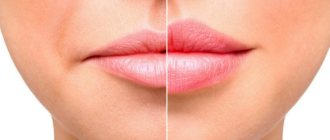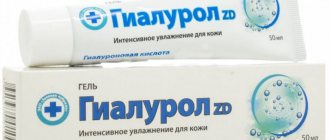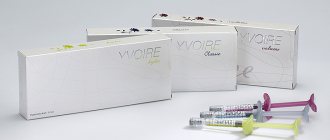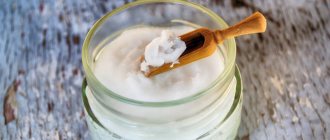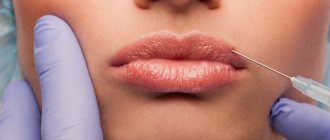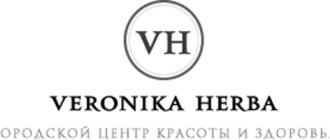How is Botox different from filler?
Botulinum therapy
The procedure is an injection of botulinum toxin type A into areas requiring correction.
As a result, the nerve impulse in this area is blocked and the muscles relax, which achieves the effect of smoothing out wrinkles or modeling facial contours. Those. botulinum therapy eliminates those wrinkles that appear as a result of muscle activity. In addition, botulinum therapy is actively used for hyperhidrosis, as well as for medical purposes (recovery from injuries, cerebral palsy, etc.).
Botulinum therapy has no analogues and is still a completely unique technique.
Important! The most common misconception is that Botox is injected into the lips. Actually this is not true! Botulinum therapy can cope with cassette wrinkles that are located around the lips, but neither Botox nor its analogues (Xeomin, Dysport, Phytolax, Relatox) are injected directly into the lips and are not used to correct the shape, size and volume of the lips!
Hyaluronic acid
Hyaluronic acid fills wrinkles, promotes the production of collagen and elastin, and retains moisture in tissues. Also, injections of preparations based on hyaluronic acid are used to correct the shape and volume of the lips, modeling the cheekbones, facial contours, replenishing lost volume, etc.
Fillers not only visually eliminate signs of skin aging, but also improve the overall condition of the skin, and also activate internal rejuvenation processes.
Hyaluronic acid is the main component in various cosmetic procedures - biorevitalization, mesotherapy, contouring.
On the similarities between Botox and hyaluronic acid
It can only be attributed to the average period of preservation of the effect (6-12 months) and the general direction towards rejuvenating the appearance.
Indications and contraindications for biorevitalization
Indications for biorevitalization are deterioration of the skin condition due to age-related changes, bad habits, negative environmental influences, stress, lack of sleep, etc. Biorevitalization does not help eliminate deep wrinkles, but it copes well with minor problems. Also, the biorevitalization procedure is usually recommended as a preparation for the introduction of fillers, installation of mesothreads or Aptos threads, or after a vacation at sea as a restorative agent and prevention of skin photoaging.
Contraindications to biorevitalization:
- pregnancy and breastfeeding;
- bleeding disorders or taking anticoagulants (you must stop taking such drugs a week before the procedure and do not take them for a week after it);
- systemic blood diseases, acute infectious or general diseases, exacerbation of chronic diseases, febrile conditions, high temperature;
- skin diseases in the injection area;
- mental illness;
- tendency to form keloid scars;
- other contraindications (determined after consultation with a doctor).
Botox or hyaluronic acid: which is better?
When choosing which is better: botulinum therapy or hyaluronic acid, of course, you should pay attention to the desired result and specific indications.
As we found out, the methods have completely different principles of action. Therefore, if it is necessary to eliminate the consequences of active facial expressions, botulinum therapy will be the most correct solution.
If we are talking not only about facial wrinkles, but also about age-related skin changes, as well as the need to improve skin characteristics and replenish volumes, then you should pay attention to procedures based on hyaluronic acid.
By the way, both of these methods are not mutually exclusive. For example, in the presence of facial wrinkles and thin, dry skin, drugs with botulinum toxin are used to block the work of the muscles that cause wrinkles, and in the next stage (2 weeks after botulinum therapy) a drug based on hyaluronic acid is introduced to moisturize the skin, increase its firmness and elasticity .
In any case, the decision on choosing the necessary technique is made by a specialist who has a complete medical history. The wishes of the patient, of course, are also taken into account without fail.
Choose proven clinics and qualified specialists, and then the result will always please you!
Biorevitalization procedure
Before the biorevitalization procedure at the clinic on Komarova, you will be seen by a cosmetologist who will assess the condition of your skin, select the optimal hyaluronic acid preparation for you, and also draw up an injection regimen and determine the duration of the course. As a rule, the course consists of 3-7 procedures, which are carried out once every 3-4 weeks. It is recommended to repeat the biorevitalization course every 8-12 months to consolidate the results and prolong the youth and beauty of the skin.
During the consultation, the cosmetologist talks in detail about the procedure, warns about possible contraindications, and also explains how to properly care for the skin after biorevitalization.
The procedure is performed on an outpatient basis and takes no more than 30 minutes. First, an anesthetic ointment is applied to the skin. After about 15 minutes, the face becomes numb - and you can start injections.
The biorevitalization procedure is carried out under sterile conditions, the patient’s face is treated with an aseptic solution, the hair is tucked under a cap, and the doctor wears gloves. He opens the ampoule with hyaluronic acid in the presence of the patient, letting him read the name and expiration date of the drug. Then, using a syringe with a very thin needle, he makes several dozen subcutaneous injections - the patient practically does not feel them due to the anesthetic. After this, the face is treated with an antiseptic and anti-inflammatory cream, and the patient can go home.
It is not advisable to start work after the procedure - marks from injections (papules) are clearly visible on the face in the first few hours. The next day or the day after, the papules are no longer noticeable.
The most common hyaluronic acid preparations are products from the brands Restylane, Juvederm, Ial-System, etc. These are modern, high-quality, safe preparations that differ from each other in the concentration of hyaluronic acid and, accordingly, are intended for different skin types. Some of them contain anesthetics and antioxidants, vitamins, nucleic acids, and peptides.
Hyaluronic injections for the face: procedure progress
First of all, the cosmetologist needs to talk with the patient and find out what result he expects from contour plastic surgery. The doctor selects the most suitable filler and outlines the injection area.
Immediately before the procedure, the correction area is thoroughly cleaned and disinfected, and a cream with an anesthetic effect is applied to the skin.
The filler is injected subcutaneously using a syringe or a special cannula. Injections of hyaluronic acid for the face in various areas require the use of certain techniques:
- To correct wrinkles, liquid fillers are injected under the skin, linear filling or a delicate technique is used - blanching (suitable for eliminating wrinkles in the periorbital area);
- To give cheekbones, chin and other areas additional volume, softlifting with high-density fillers is used.
The average duration of injection correction is 30-60 minutes. After injections, slight swelling and redness of the skin may appear. These symptoms disappear on their own after a couple of hours.
More information about fillers and the purposes of their use
The drugs are intended to be administered by injection; fillers serve as dermal fillers. When using them, it is possible to fill the area of skin folds, wrinkles, and also create the desired contours for the facial area. The product is most similar to a gel mass with a plastic and viscous structure. The specialist introduces it in such a way as to ensure uniform distribution, as a result of which the lost tissue volumes are replenished. The skin smoothes itself, which removes folds, wrinkles, creases and unevenness.
CAN IT BE COMBINED WITH PRODUCTS IN OTHER LIBREDERM COLLECTIONS?
Can. Focus on your skin type and the effect you want to achieve. For example, for deep wrinkles and a pronounced loss of skin elasticity, combine products from the hyaluronic fillers collection with Mezolux bio-reinforcing creams.
- Clinical study in vivo, n=20 from 45 to 65 years, measured after 7 days of use.
- Clinical testing, n=10, from 30 to 50 years, measured at 0, 30, 120 and 240 min. Visioscan instrumental measurement.
- * Clinical study in vivo, n=20 from 45 to 65 years, measured after 7 days of use.
- **In vitro study measuring the increase in acetylcholinesterase enzyme action by Stevia honey leaf extract.
- *** In vivo test under the supervision of dermatologists, 25 respondents, testing the active ingredient in its pure form.
Recovery process after wrinkle correction
Since the procedure is slightly traumatic and is limited to injection, there is no long rehabilitation period. You can also see changes almost immediately after the procedure; you only need to wait a couple of hours. But the final look will be achieved approximately 2-3 weeks later. During this period, it is important to treat the affected part of the face with care, including steaming, rubbing, and performing massage actions.
Usually the specialist schedules a repeat visit to the clinic, this allows for a qualitative assessment of the result and, if necessary, correction. But usually this is not required; the involvement of an experienced cosmetologist and the use of proven fillers ensures the desired result in one procedure.
More about the correction process
Modern cosmetology clinics can offer several variations of fillers:
- Biosynthetic. Used for collagen formation and contouring;
- Synthetic. They remain in place forever because they are not excreted by the body;
- Biodegradable. Consist of hyaluronic acid or calcium hydroxyapatite.
The latter option is stored for a certain time, it is safe for health and is gradually eliminated. This ensures effective correction of folds, wrinkles, small defects, and unevenness. A tool is used for placement under the skin that does not cause injury. Local anesthesia is usually used because the puncture is unpleasant.
Are fillers always effective in removing wrinkles?
It happens that patients come who need, for example, to fill out the horizontal lines of the forehead, lion lines and smoker's lines in one treatment session. Theoretically, there are no contraindications for this. But in many situations, the fight against wrinkles needs to start with Botox or mesotherapy.
The appearance of wrinkles is not always the result of loss of subcutaneous tissue. Sometimes their appearance is mainly due to a decrease in skin quality or dehydration. In this case, improving skin density can make wrinkles less noticeable and they will no longer bother the patient.
Treatment methods in aesthetic cosmetology change over time, and the arsenal of a cosmetologist expands. Therefore, it is always worth considering minimally invasive but very effective rejuvenation techniques - Botox, mesotherapy or fractional laser.
Some patients are suitable for wrinkle filling procedures with hyaluronic acid.
Wrinkle filling results
HOW DO 3D HYALURONIC FILLERS WORK?
The key active ingredient of Libriderm 3D hyaluronic fillers is high-quality hyaluronic acid of different molecular weights, produced in Switzerland.
- High molecular weight (100+ kDa) remains on the surface of the stratum corneum of the skin and increases its hydration.
- Medium molecular weight (30-100 kDa) accelerates skin regeneration by stimulating the division of epidermal cells.
- Low molecular weight (<30 kDa) penetrates from the surface of the skin into the deep layers of the dermis and helps fill wrinkles.
The composition of 3D hyaluronic fillers is supplemented with extract of crushed leaves of Stevia honey, which has local anticholinergic activity - relaxes facial muscles*, preventing the formation of new wrinkles.
How long does the wrinkle filling procedure take?
Exactly how long the procedure will take depends entirely on what we are going to do and in what area. The filling of wrinkles itself is relatively quick, since it comes down to the injection of the drug. What takes the most time is a thorough analysis of the patient's face and the appropriate planning of the procedure, which can be more or less labor-intensive. Much depends, of course, on the doctor’s experience.
Typically, together with a consultation, interview, drawing up a plan of action and explaining to the patient what he can expect, the procedure takes from 30 minutes to an hour.
Biorevitalization results: before and after
After the first procedure, the result of biorevitalization can only be noticeable in the “before” and “after” photos - the difference, as a rule, is not yet visible to the naked eye. However, after 2-3 procedures, the condition of the skin noticeably improves - wrinkles and folds become less pronounced, the color and texture of the face becomes better, and the oval is tightened.
Immediately after the procedure, papules may persist for 1-3 days (less often – up to 5 days, depending on the individual sensitivity of the skin). In the most delicate places - for example, in the area under the eyes, sometimes on the chin or cheekbones - small bruises and bruises remain after injections. During the first day, it is not recommended to use any absorbable ointments, but from the second day you can use them. Also, during the first two days, slight swelling may persist on the face - a skin reaction to the injections.
